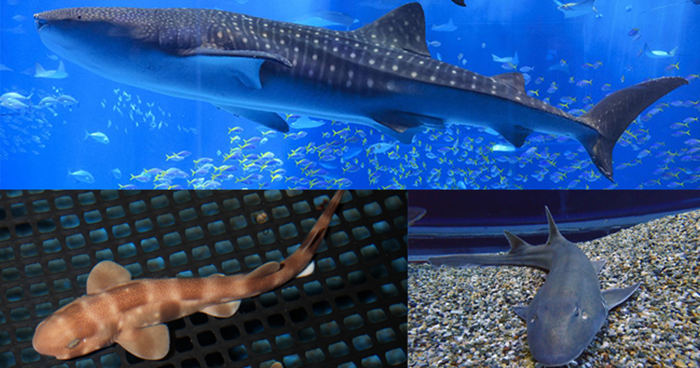
Team Leader
Shigehiro Kuraku
Ph.D.
Laboratory for Phyloinformatics
[Closed Mar. 2023]
E-mailshigehiro.kuraku[at]riken.jp
Please replace [at] with @.
The ‘genome’ stands for a complete set of genetic information per species (or cell) that is a blueprint of our body structure and biological processes at different levels. The genome was not suddenly created but is an interim product of successive modifications over billion years. Every single genome has a history embedded in DNA sequences, and comparisons of the information between species provide clues for past evolutionary events.
By making use of cutting-edge DNA sequencing technologies and bioinformatics, we conduct molecular-level analysis on diversity and evolution of genomes and epigenomes of vertebrates. Our activity includes taking an initiative in whole genome sequencing and analysis projects for some important vertebrate species, which is leading to our fostering of biodiversity literacy from viewpoints of genomics and molecular evolution.
Research Theme
- Biodiversity research based on understanding of life sciences and molecular evolutionary approaches
- Improvement of genome analysis techniques for chromosome-scale DNA sequencing
- Vertebrate evolutionary genomics encompassing chromatin organization and regulation
- Decoding genomes of important organisms with little molecular information
Selected Publications
Ohnishi T, Kiyama Y, Arima-Yoshida F, et al.
Cooperation of LIM domain-binding 2 (LDB2) with EGR in the pathogenesis of schizophrenia.
EMBO molecular medicine
13(4), e12574 (2021)
doi: 10.15252/emmm.202012574
Kajikawa E, Horo U, Ide T, et al.
Nodal paralogues underlie distinct mechanisms for visceral left-right asymmetry in reptiles and mammals.
Nature ecology & evolution
4(2), 261-269 (2020)
doi: 10.1038/s41559-019-1072-2
Kadota M, Nishimura O, Miura H, et al.
Multifaceted Hi-C benchmarking: what makes a difference in chromosome-scale genome scaffolding?
GigaScience
9(1), giz158 (2020)
doi: 10.1093/gigascience/giz158
Kishida T, Go Y, Tatsumoto S, et al.
Loss of olfaction in sea snakes provides new perspectives on the aquatic adaptation of amniotes.
Proceedings. Biological sciences
286(1910), 20191828 (2019)
doi: 10.1098/rspb.2019.1828
Hara Y, Takeuchi M, Kageyama Y, et al.
Madagascar ground gecko genome analysis characterizes asymmetric fates of duplicated genes.
BMC Biology
16, 40 (2018)
doi: 10.1186/s12915-018-0509-4
Hara Y, Yamaguchi K, Onimaru K, et al.
Shark genomes provide insights into elasmobranch evolution and the origin of vertebrates.
Nature ecology & evolution
2(11), 1761-1771 (2018)
doi: 10.1038/s41559-018-0673-5
Onimaru K, Kuraku S.
Inference of the ancestral vertebrate phenotype through vestiges of the whole-genome duplications.
Briefings in functional genomics
17(5), 352-361 (2018)
doi: 10.1093/bfgp/ely008
Nishimura O, Hara Y, Kuraku S.
gVolante for standardizing completeness assessment of genome and transcriptome assemblies.
Bioinformatics
33(22), 3635-3637 (2017)
doi: 10.1093/bioinformatics/btx445
Kadota M, Hara Y, Tanaka K, et al.
CTCF binding landscape in jawless fish with reference to Hox cluster evolution.
Scientific Reports
7(1), 4957 (2017)
doi: 10.1038/s41598-017-04506-x
Smith JJ, Kuraku S, Holt C, et al.
Sequencing of the sea lamprey (Petromyzon marinus) genome provide insights into vertebrate evolution.
Nature Genetics
45(4), 415-421 (2013)
doi: 10.1038/ng.2568
Kuraku S.
Impact of asymmetric gene repertoire between cyclostomes and gnathostomes.
Seminars in Cell and Developmental Biology
24(2), 119-127 (2013)
doi: 10.1016/j.semcdb.2012.12.009
Kuraku S, Zmasek CM, Nishimura O, Katoh K.
aLeaves facilitates on-demand exploration of metazoan gene family trees on MAFFT sequence alignment server with enhanced interactivity.
Nucleic acids research
41(Web Server issue), W22-8 (2013)
doi: 10.1093/nar/gkt389
Members
Mitsutaka Kadota
Technical Scientist
Osamu Nishimura
Technical Scientist
Chiharu Tanegashima
Expert Technician
Kaori Tatsumi
Technical Staff II
Yuta Ohishi
Junior Research Associate




